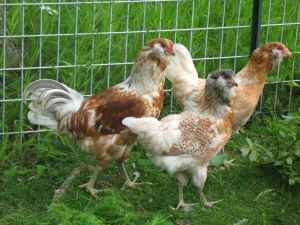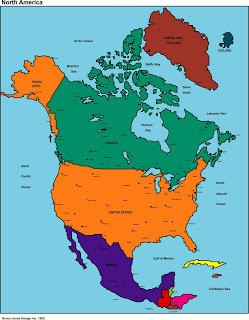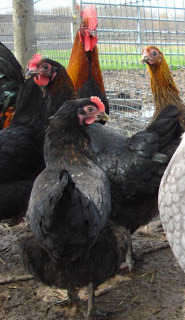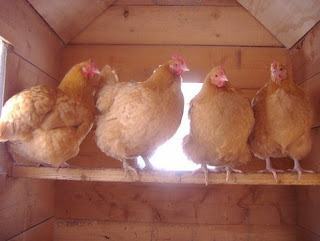Building My Layer Flock in Alaska
Good morning, Blog Buds. As you know, I've been obsessed with chickens lately. If I started dressing Bessie and Amelia in doll clothes, my family is going to haul me away, I swear. Anyway, I've learned that building a laying flock in Alaska can be a unique experience.

Bessie and Amelia are Americaunas. They will lay light blue or green eggs.
.
If you glance at a map of North America, you will notice Alaska is located thousands of miles away from most of the rest of the United States. And most of the hatcheries are located in the Lower 48 states too. So, if a farmer wants to buy new chicks, she's got two choices. One, fly them up from the Lower 48 and hope they survive the trip. Or, buy from our neighbors. Last time I checked, we only have one hatchery in operation up here right now, the Alaska Triple D

Okay, so if I'm afraid to fly day-old chicks up thousands of miles on a cold airplane, I need to buy locally. And that got me to thinking scientifically. Alaska farmers are a generous and cooperative lot and I'm really enjoying getting to know them. But, I was thinking, if we're swapping animals back and forth, what does that do to Genetic Diversity? From what I've seen, the animals are healthy and happy, so I guess that hasn't happened. Still, it sets off the Sci-Fi part of my authorly persona. What would happen to a colony on Mars if their livestock became inbred?
.
These are Black Copper Marans. They lay dark brown eggs.

In any case, I would like to raise Americaunas, Black Copper Marans and Buff Orpingtons. You can learn all about them at my favorite chicken lovers' website- Backyard Chickens - Breed Chart
.
These are Buff Orpingtons. They lay light brown eggs and they're also beautiful and loveable.



Bessie and Amelia are Americaunas. They will lay light blue or green eggs.
.
If you glance at a map of North America, you will notice Alaska is located thousands of miles away from most of the rest of the United States. And most of the hatcheries are located in the Lower 48 states too. So, if a farmer wants to buy new chicks, she's got two choices. One, fly them up from the Lower 48 and hope they survive the trip. Or, buy from our neighbors. Last time I checked, we only have one hatchery in operation up here right now, the Alaska Triple D

Okay, so if I'm afraid to fly day-old chicks up thousands of miles on a cold airplane, I need to buy locally. And that got me to thinking scientifically. Alaska farmers are a generous and cooperative lot and I'm really enjoying getting to know them. But, I was thinking, if we're swapping animals back and forth, what does that do to Genetic Diversity? From what I've seen, the animals are healthy and happy, so I guess that hasn't happened. Still, it sets off the Sci-Fi part of my authorly persona. What would happen to a colony on Mars if their livestock became inbred?
.
These are Black Copper Marans. They lay dark brown eggs.

In any case, I would like to raise Americaunas, Black Copper Marans and Buff Orpingtons. You can learn all about them at my favorite chicken lovers' website- Backyard Chickens - Breed Chart
.
These are Buff Orpingtons. They lay light brown eggs and they're also beautiful and loveable.

Published on August 15, 2011 07:03
No comments have been added yet.
Kimber An's Blog
- Kimber An's profile
- 19 followers
Kimber An isn't a Goodreads Author
(yet),
but they
do have a blog,
so here are some recent posts imported from
their feed.



